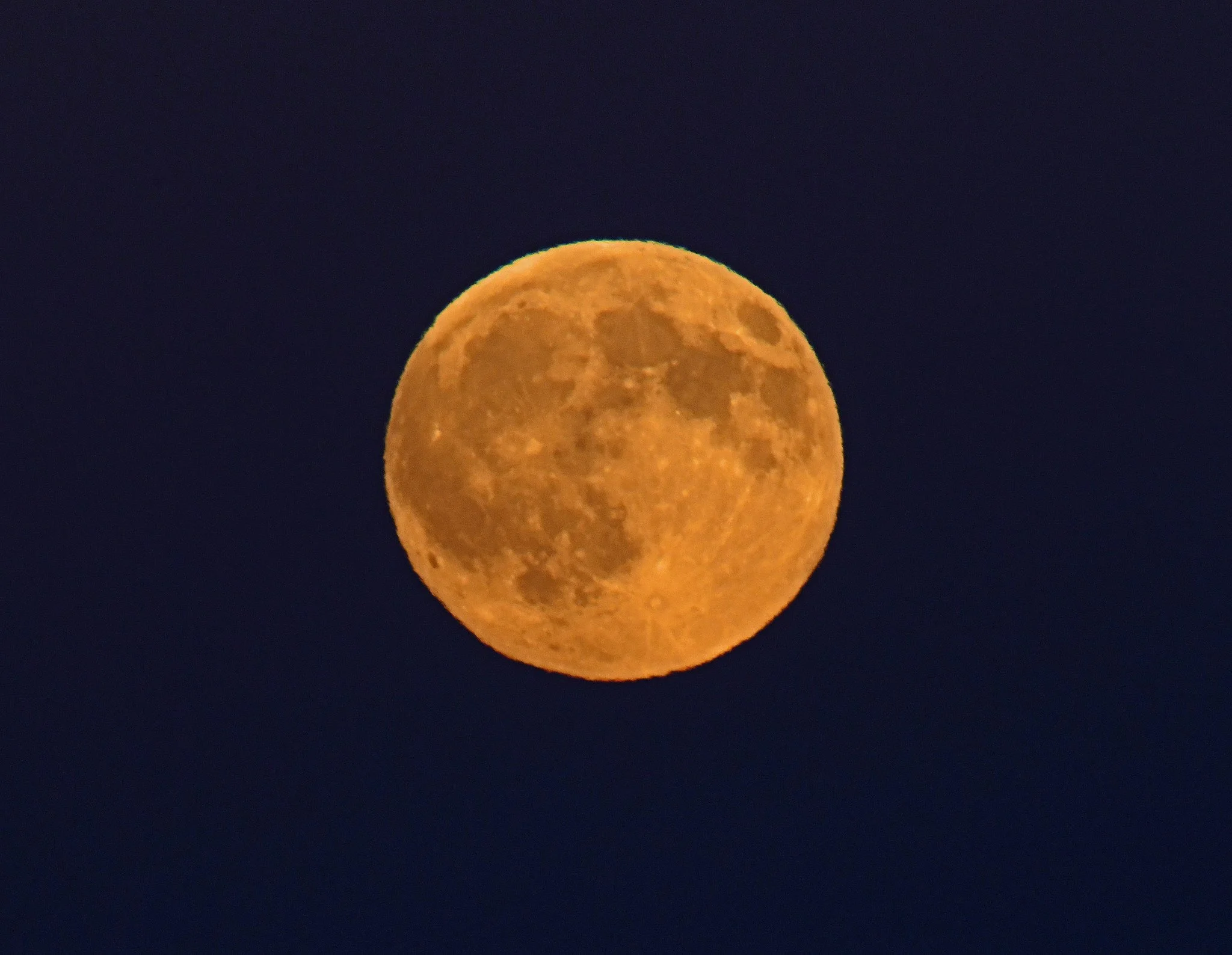Here you see October’s full moon rising over Blue Hill and Jericho Bays while the sun was setting yesterday evening. Haze and particles in our atmosphere distorted it and made it appear reddish until it broke through the pollution band.
This visit by our faithful companion is a three-fer: it’s the Harvest Moon, because it’s the full moon closest to our autumnal equinox; it’s the Hunter’s Moon, because that’s the traditional name given to the October full moon, and it’s a Super Moon because it’s close to its lowest orbit of Earth (its “perigee”). We’ll have Super Moons in November and December, also.
The Harvest and Hunter’s Moon designations reportedly are the most popular names that this month’s moon was called by northeastern Native Americans (Algonquin, often), as adopted by early European settlers and collected by the Farmers’ Almanac.
However, the October moon has other historic Native American names that vary geographically. For example, Maine's Abenaki people referred to it by various names depending on the month’s events, such as the Dying Grass Moon or the Travel Moon.
(Images taken in Brooklin, Maine, on October 6, 2025.)




